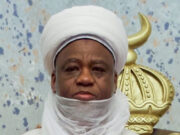
“Today, we won’t work because we are going to see Pele,” read a large placard in a street in Guadalajara, Mexico, during a 1970 football tour in the country. Lives and means came to a screeching halt to savour the iridescent glory of one man. One man. A work of irreplicable alchemy; a sight so powerful the eyes must be supported by a wide open mouth to fully register admiration. Pele.
The football legend earned his wings. On Thursday, he joined his ancestors after battling colon cancer. Pele’s body might have left us, but his genial smiles, witty jokes, numerous skills and goals will forever remain with us.
From a wide-eyed teenager who debuted for Santos in 1956 to the gold-spritzed, three-time World Cup-winning football legend who retired in 1977, Pele squeezed endearing stories out of the round leather game. Tales that often are too surreal that they read like myths.
Time erodes everything; everything but Pele. Nothing dares belittle the magic of the diminutive shaman with wands for legs. Pele, an unending tale of football wizardry that has and will continue to travel down generations, with lips painting paradise whenever they try to describe him. He could be immortalised as the 8th World Wonder and it will still feel like a poor prize for a man who gave humanity unbridled happiness.
A black little boy named after Thomas Edison went on to light not just a bulb but the face of the entire world.
Diego Maradona, his eternal partner on the golden stool of football divinity, once declared: “he belonged in a museum.” Bobby Charlton, former England football legend, once joked: “Football might have been invented for him”. In Brazil, his native home, he was proclaimed a “national treasure”, an asset as invaluable as the Sugar Loaf Mountain and the ethereal statue of Christ The Redeemer at its peak.
From the favelas of Rio De Janeiro to the cathedrals of Barcelona, to the minarets of Mecca, to the pagodas of Shanghai, people who disagree on the concept of deification all agree Pele is “O Rei” — the king — of football.
NAMED AFTER THOMAS EDISON

Edison
Lavishly named Edson Arantes do Nascimento, Pele was born on October 23, 1940, in Tres Coracoes, a city in south-eastern Brazil. He was named after Thomas Edison, the American inventor of the light bulb.
Pele’s birth coincided with the arrival of electricity in the village, and Dondinho, his father, wanted to immortalise the period with his son’s name.
“Before I was born, there was no electricity in our town,” Pele wrote in ‘Why Soccer Matters’, his 2014 memoir.
“On the day I was born, the electric bulb reached the city. My parents were very happy to see the light of the bulb. He named me Edson after Thomas Alva Edson, the inventor of this bulb, but by mistake, he could not keep the spelling of his name.”
Dondinho was a professional footballer who struggled to provide for his family with his meagre income; so, Pele spent his childhood in squalor.
Pele grew up in the town of Baurú in the state of São Paulo where, as a child, he worked part-time jobs in local cafes to support the family income.
He was dubbed “Pelé” during his school days when he reportedly mispronounced the name of Bilé, then goalkeeper for Vasco da Gama.
THE BOY GENIUS

With a stunted career, Dondinho taught his son basic football techniques. Pele soon became the boy wonder of the entire city.
After brief stints with neighbourhood teams like September 7 and Amériquinha, he joined Bauru Athletic Club juniors and led the club to three state youth championships, underscoring his prodigiousness.
At 15, Waldemar de Brito, former Brazilian international and coach, took Pele to Santos FC for a tryout.
Brito was said to have famously declared to the directors at the club that the teenager would go on to be “the greatest football player in the world.”
Pele didn’t disappoint. He made his senior debut on September 7 of that same year and scored in a 7-1 win against Corinthians Santo Andre. At just 16, he won the Brazilian league’s highest goal-scorer prize in 1957.
A few months later, he was invited to the national team, and there began the love story of Pele and the World Cup.
THREE-TIME WORLD CUP WINNER

Image: Hans-Jürgen Schmidt/HJS-Sportfotos/picture alliance
On July 7, 1957, Pele made his international debut against Argentina at the Maracana, and Brazil lost 2-1. The 16-year-old scored Brazil’s only goal of the game – becoming the youngest player to score for Selecao, a record that holds till today.
Despite his talent, his participation in the 1958 World Cup in Sweden spurred debate in Brazil, with many detractors clinging to the argument that since he was not old enough, he would not be good enough. Moreso, a knee injury made his case more tedious.
However, Vincente Feola, Brazil’s head coach, opted to include Pele in the squad. After missing the first two games, he recovered for the subsequent fixtures, and his record-setting tournament began. He became the youngest player to score a World Cup goal, putting one past Wales in the quarter-finals.
In the semi-final against France, Pele scored a hat-trick and became the youngest to do so in a World Cup.
At 17 years and 239 days, he became the youngest player to appear and score in a World Cup final as Brazil beat host Sweden 5-2. He scored twice. One of the goals – a flick over a defender and volley into the corner of the net – remains one of the fondest moments in World Cup history.
Brazil would then retain the Mundial four years later at the 1962 World Cup in Chile.
Pele was injured for a chunk of the tournament, but that did not stop the Selecao from shining, with Garrincha, Jairzinho, Gerson, Tostão, and Rivelino stepping up.
A disappointing outing at the 1966 World in England followed. Pele and Brazil were victims of vicious tackles that hampered their game and they were knocked out in the group stage.
Pele’s brutish treatment in England roughened the love of international football out of him, and he vowed not to play at the World Cup again. But he would change his mind. He was glad he did because, at the 1970 World Cup in Mexico, Brazil won its third World Cup. And Pele became the only player to lift the Jules Rimet trophy three times.
He scored four goals as Brazil defeated England, Peru, Uruguay and Italy to achieve the unthinkable.
On the 1970 World Cup winning squad, Pele wrote: “That team, frankly, did not have as much talent as the squad we had assembled in Sweden in 1958. We had weaknesses that were there for everyone to see.”
“Few people back in Brazil expected us to win the championship — some journalists didn’t even think we’d make it out of group play. But, as we prayed and spent all of our days together, I saw something happening that, in more than a decade of professional soccer, I’d never quite seen before. In our practices, and then our games, our performance was even greater than the sum of our individual abilities. We began playing phenomenally well. And we realised that we really had something special on our hands.”
OVER 1,200 GOALS SCORED

He did it first… the famous bicycle kick attempt from a 1965 friendly between Brazil and Belgium
After 18 years with Santos, where he won 25 silverware, Pele left Brazil; and despite strong interest from European superclubs, he opted for the US instead. He signed for New York Cosmos in the newly founded North American Soccer League (NASL). He cost Cosmos $7 million.
“Everyone wanted to touch him, shake his hand, get a photo with him,” said John O’Reilly, then Cosmos media spokesman.
He hung his glorious boots and ended his storied football career on October 1, 1977, at the Giants Stadium, where Cosmos played Santos FC. He played the first half of the game for the American club and the second half for Santos.
According to the Guinness Book of Records, Pele scored 1,279 goals in 1,363 appearances during a career that spanned 21 years.
He remains the footballer with the most career goals. The Brazilian hit 92 hat-tricks and scored four goals on 31 occasions, five on six occasions, and once scored eight in one match.
However, FIFA claimed Pelé has 1,281 goals in 1,363 matches. The discrepancy has brought scrutiny to the figures, with many detractors alleging that a chunk of those goals was scored in unofficial games.
COMMANDED A ’48-HOUR TRUCE’ DURING THE NIGERIAN CIVIL WAR

“It has been nearly 50 years since my first visit to Nigeria. I look forward to being there again on August 11/12,” Pele tweeted on his official handle in 2016
Robert Fish, co-author of Pele’s 1977 autobiography elegantly titled ‘My Life and the Beautiful Game’, claimed that the Brazilian was honoured with a ceasefire during visitation to Nigeria amid the country’s civil war.
“In Nigeria, a two-day truce was declared in the tragic war with Biafra so that both sides could see him play,” he wrote in the introduction of the book’s revised edition.
Pele also corroborated the claim in a 2011 interview with CNN. He said: “Yes, that’s — I feel proud of that. Because, you know, with my team, Santos — this you have in the film, my biography — we stopped a war.
“Because the people were so crazy for football — they love football, they stopped the war to see Santos play in Africa.
“All the Africans play — it is different — because we didn’t expect that. The same what I used to say, when we travel, where we stay, we try to give always a good message. You know? This is a big responsibility, but I trust God.”
The Nigerian civil war took place between 1967 and 1970. The war between the Nigerian Army and Biafran forces cost an estimated number of casualties of over one million people.
Debunking Pele’s submission on influencing a two-day ceasefire among the fighters, Olaojo Aiyegbayo, a Nigerian researcher and writer, countered that no local sources confirm the acclaimed truce between the government forces and the Biafran army.
Aiyegbayo added that although Pele, alongside his Santos teammates, did visit Nigeria twice – Lagos and Benin in 1969 – as part of their world tour, there was no ceasefire recorded during or around their matches in the country.
GREATEST-OF-ALL-TIME DEBATE

Pele perenially remained a yardstick for gauging the greatness of any footballer. His name is an ever-present feature in the evolving debate on the best player to play the round leather game.
Until Lionel Messi and Cristiano Ronaldo emerged, Maradona was the only footballer armed with the exploits to contest the crown with Pele.
The debate underscores the otherworldliness of Pele that after 45 years since he quit football, the aroma of his luscious deeds still makes our eyes water.


















































